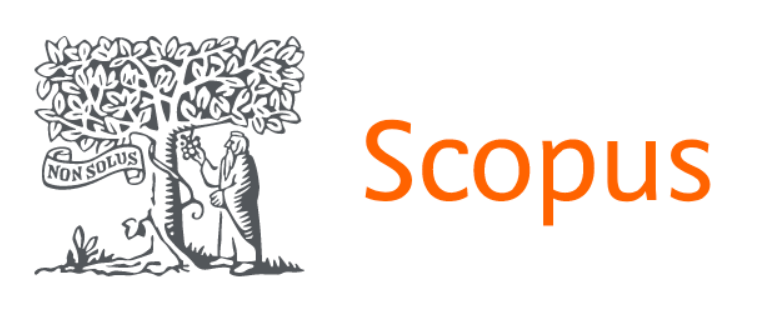THE SMELL OF BREAD: ITS EFFECTS ON PSYCHOLOGY, EMOTIONS AND MEMORIES
DOI:
https://doi.org/10.18623/rvd.v22.n2.3328Keywords:
Bread Smell, Nostalgia, OlM MemoryAbstract
The primary objective of this qualitative study is to examine the emotional, psychological, and social effects of bread odor on individuals. The effects of bread odor on emotional reactions and emotional perceptions carry profound meanings not only in personal experiences but also in cultural contexts. This makes the examination of bread odor important for both gastronomy and cultural studies. A semi-structured interview technique was used as the data collection tool in the study. The research population consisted of individuals of different ages, genders, and socio-cultural backgrounds residing in Sakarya, while the sample consisted of 21 participants selected through snowball sampling. A total of 15 questions were asked to the participants, organized around three themes: emotional effects, memory, and psychological and social effects. The findings indicate that the smell of bread frequently evokes feelings of family warmth, longing for the past, compassion, and trust, and bread is defined as a sacred and special food. The smell is associated with memories such as mothers and grandmothers, village life, student housing, and family tables. From a psychological perspective, the scent of bread has been found to relax individuals, provide emotional peace and security, and strengthen social bonds. This demonstrates that scent is a significant trigger for individual memory.
References
Altınok, M. (2020). Yeme Tutumları, Duygusal Yeme, Farkındalıkla Yeme ve Ortoreksiyanın Metakognisyonlar Açısından İncelenmesi, (Yüksek Lisans Tezi), İstanbul: Fatih Sultan Mehmet Vakıf Üniversitesi, Lisansüstü Eğitim Enstitüsü.
Arslan, N. ve Aydın, H. (2019). Ekmek İsrafını Önleme Niyetinin Değerlendirilmesi, Journal of Management and Economics Research, 17(4): 165-179.
Atik Gürbüz, İ. (2019). Osmanlı Dönemi Metinlerinde Ekmek ve Ekmekle İlgili Anlam Çerçeveleri, Akademik Dil ve Edebiyat Dergisi, 3(4): 348-376.
Badem, A. (2021). Temel Mutfak Teknikleri ve Yönetimi. Detay Yayıncılık, Ankara.
Bakır, A., Doğan, E., Gençol, H. ve Kaya, İ. (2022). Bireylerin Yeme-İçme Tercihlerini Etkileyen Faktörler, Anatolia Social Research Journal, 1(1): 34-51.
Bayrakdar, O. K. (2021). Bir Flaneur Olarak Covid-19 Sonrası Mekânsal Değişimin İzlerini Sürmek: Bakü Fevvareler Meydanı Örneği, Hacettepe Üniversitesi Edebiyat Fakültesi Dergisi, 38(2): 597-611.
Beyhan, B., & Taş, A. (2019). Beslenme, ruh sağlığı ve duygu durum ilişkisi.
Beyhan, Y., ve Taş, V. (2019). Mental Sağlık ve Beslenme, Zeugma Health Res, 1(1): 30-35.
Bircan, D., Güray, C. T. ve Bostan, K. (2017). Farklı Yöntemlerle Ekşitilmiş Hamurlardan Ekmek Yapımı Üzerine Çalışmalar, Aydın Gastronomy, 1(1): 1-8.
Bozan, N. (2009). Hollanda Yeme Davranışı (DEBQ) Anketinin Türk Üniversite Öğrencilerinde Geçerlilik ve Güvenirliğinin Sınanması, (Yüksek Lisans Tezi), Ankara: Başkent Üniversitesi, Sağlık Bilimleri Enstitüsü.
Canetti, L., Bachar, E. ve Berry, E. M. (2002). Food and Emotion, Behavioural Processes, 60(2): 157–164.
Creswell, J. W. (2013). Qualitative Inquiry and Research Design: Choosing Among Five Approaches. Sage.
Çapar, M. C. ve Ceylan, M. (2022). Durum çalışması ve olgubilim desenlerinin karşılaştırılması. Anadolu Üniversitesi Sosyal Bilimler Dergisi, 22(Özel Sayı 2): 295-312.
Çetinkaya, N., & Yıldız, S. (2018). Somut olmayan kültürel miras unsuru Erzurum lavaş (acem) ekmeğinin turistik ürüne dönüştürülmesine yönelik bir çalışma. Güncel Turizm Araştırmaları Dergisi, 2(Ek1), 430-452.
Çeven Ayan, E. ve Belkayalı, N. (6-8 Kasım 2019). Mekân, bellek ve koku, 7. Peyzaj Mimarlığı Kongresi, 6-8 Kasım, Antalya.
Desmet, P. M. A. ve Schifferstein, H. N. J. (2008). Sources of Positive and Negative Emotions in Food Experience, Appetite, 50(2–3): 290–301.
Dölekoğlu, C. Ö., Giray, F. H., ve Şahin, A. (2014). Mutfaktan Çöpe Ekmek: Tüketim ve Değerlendirme, Akademik Bakış Uluslararası Hakemli Sosyal Bilimler Dergisi, (44): 1-15.
Erkuş, A. ve Günlü, E. (2008). Duygusal Zekanın Dönüşümcü Liderlik Üzerine Etkileri, Dokuz Eylül Üniversitesi İşletme Fakültesi Dergisi, 9(2): 187-209.
Evers, C., Adriaanse, M., de Ridder, D. T. D. ve de Witt Huberts, J. C. (2013). Good Mood Food. Positive Emotion As A Neglected Trigger For Food İntake, Appetite, (68): 1–7.
Falconer, E. (2013). Transformations of The Backpacking Food Tourist: Emotions And Conflicts, Tourist Studies, 13 (1): 21–35.
Ganley, R. M. (1989). Emotion and Eating in Obesity: A Review of The Literature, International Journal of Eating Disorders, 8(3): 343–361.
Gezer, H. (2012). Mekânı Kavrama Sürecinde Algılama Bileşenleri, İstanbul Ticaret Üniversitesi Sosyal Bilimler Dergisi, (21): 1-10.
Goleman, D. (2000). Duygusal Zekâ Neden IQ’dan Daha Önemlidir? (Çev. Banu Seçkin Yüksel). Varlık Yayınları, İstanbul.
Hoek, A. C., Pearson, D., James, S. W., Lawrence, M. A. ve Friel, S. (2017). Shrinking The Food-Print: A Qualitative Study İnto Consumer Perceptions, Experiences and Attitudes Towards Healthy and Environmentally Friendly Food Behaviours, Appetite, (108): 117–131.
Kanjanakorn, A. ve Lee, J. (2017). Examining Emotions and Comparing The Essense Profile and The Coffee Drinking Experience in Coffee Drinkers in The Natural Environment, Food Quality and Preference, (56): 69–79.
Kara, Ö. (2020). Thomas Reid’in Algı Teorisinde Görme, APJİR, 4(2): 250-267.
Karhan, J. (2024). Oklavadan Sofraya Türklerin Kültürel Mirası “Yufka” Ekmeğinin Sosyotarihsel ve Kültürel Anlamı, Uludağ Üniversitesi Fen-Edebiyat Fakültesi Sosyal Bilimler Dergisi, 25(46): 221-233.
Kim, J. Y., Prescott, J. ve Kim, K. O. (2017). Emotional Responses to Sweet Foods According to Sweet Liker Status, Food Quality and Preference, (59): 1–7.
Koç, E. (2016). Tüketici Davranışı ve Pazarlama Stratejisi. Seçkin Yayıncılık, Ankara.
Köse Khıdırov, B. (2016). Mekân Algısı ve Koku: Kokunun Mekân Tasarımına Potansiyel Katkıları, (Yüksek Lisans Tezi), İstanbul: Mimar Sinan Güzel Sanatlar Üniversitesi, Fen Bilimleri Enstitüsü.
Krippendorff, K. (2013). Content Analysis: An Introduction to Its Methodology. Sage.
Kvale, S. (1996). Interviews: An Introduction to Qualitative Research Interviewing. Sage.
Lincoln, Y. S., & Guba, E. G. (1985). Naturalistic Inquiry. Sage.
Macht, M. (1999). Characteristics of Eating in Anger, Fear, Sadness and Joy, Appetite, 33(1): 129–139.
Miles, M. B., & Huberman, A. M. (1994). Qualitative Data Analysis. Sage.
Patton, M. Q. (2014). Qualitative Research & Evaluation Methods. Sage.
Pekar, E. (2017). Duyusal Markalama ve Tüketicilerin Marka Algısında Duyusal Markalamanın (Beş Duyunun) Rolü, (Yüksek Lisans Tezi), Bursa: Bursa Uludağ Üniversitesi, Sosyal Bilimler Enstitüsü.
Proust, M (2008). Guermantes Tarafı- Kayıp Zamanın İzinde. Çev.: Roza Hakmen. İstanbul: Yapı Kredi.
Spence, C. (2015). Leading the consumer by the nose: on the commercialization of olfactory design for the food and beverage sector. Flavour, 4(1), 31.
Spence, C., ve Youssef, J. (2021). Aging and the (chemical) senses: implications for food behaviour amongst elderly consumers. Foods, 10(1), 168.
Sultson, H., Kukk, K. ve Akkermann, K. (2017). Positive and Negative Emotional Eating Have Different Associations With Overeating and Binge Eating: Construction and Validation of The Positive-Negative Emotional Eating Scale, Appetite, (116): 423–430.
Tepecik, A. ve Gümüş, Ç. (2017). Ekmek İsrafını Önleme Konulu Sosyal Sorumluluk Kampanyasına İlişkin Akademisyen, Uzman ve Öğrenci Görüşleri, Sanat ve Tasarım Dergisi, (19): 161-181.
Tezcan, B. (2009). Obez Bireylerde Benlik Saygısı, Beden Algısı ve Travmatik Geçmiş Yaşantılar, (Tıpta Uzmanlık Tezi), İstanbul: Prof. Dr. Mazhar Osman Ruh Sağlığı ve Sinir Hastalıkları Eğitim ve Araştırma Hastanesi.
Theodosius, C. (2006). Recovering Emotion From Emotion Management, Sociology, 40(5): 893-910.
Url-1 (2025). https://www.anadoluizlenimleri.com/ekmek-kokusu-mutluluk-hormonu-salgilatiyor-mu# (Erişim Tarihi: 19.01.2025).
Wallis, D. J. ve Hetherington, M. M. (2009). Emotions and Eating. Self-Reported and Experimentally İnduced Changes in Food İntake Under Stress, Appetite, 52(2): 355- 362.
Yaparel, C., ve Elmacı, Y. (2016). Tat-koku İnteraksiyonları, Akademik Gıda, 14(2): 218-224
Yıldırım, A., & Şimşek, H. (2016). Sosyal Bilimlerde Nitel Araştırma Yöntemleri. Seçkin Yayıncılık.
Zülfikar, H. (2012). Anlamları, Deyimleri ve Çeşitleriyle Ekmek, TDK Türk Dili Dergisi, CIII, (728): 12-17.
Downloads
Published
How to Cite
Issue
Section
License
I (we) submit this article which is original and unpublished, of my (our) own authorship, to the evaluation of the Veredas do Direito Journal, and agree that the related copyrights will become exclusive property of the Journal, being prohibited any partial or total copy in any other part or other printed or online communication vehicle dissociated from the Veredas do Direito Journal, without the necessary and prior authorization that should be requested in writing to Editor in Chief. I (we) also declare that there is no conflict of interest between the articles theme, the author (s) and enterprises, institutions or individuals.
I (we) recognize that the Veredas do Direito Journal is licensed under a CREATIVE COMMONS LICENSE.
Licença Creative Commons Attribution 3.0







